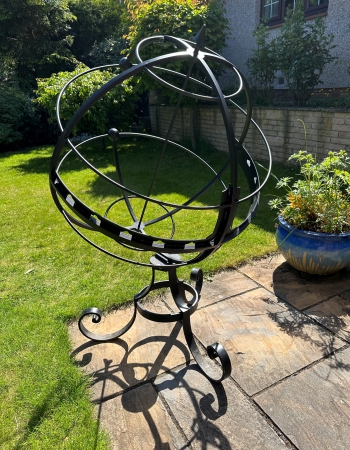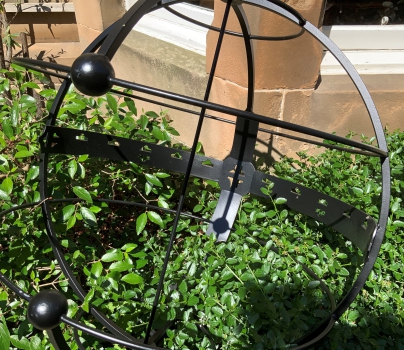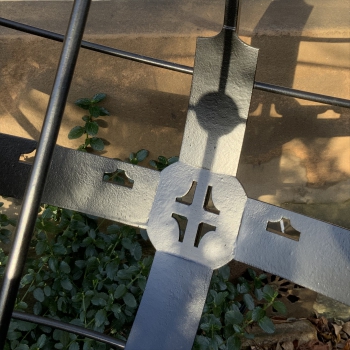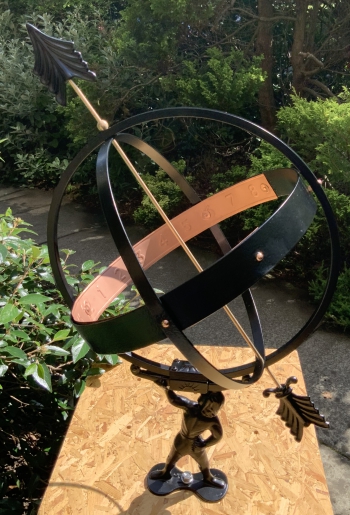
The armillary sundial captures the dynamics of the earth spinning on its axis and orbiting the sun. The equatorial band is pierced with markers for the hours. A meridian band shows the seasons.
Now that we have moved, we have been looking for a place for our armillary sundial. Before, it was nestling gently in its surroundings with plants in the garden growing up through the rings and wrapping themselves around. For the moment it is out in the open where we can see it better. It has an air of almost floating on its stand with the lightness of the rings and the delicate shadows on the ground. Continue reading



